For our summer holiday this year, my family and I decided to tour Rügen, the largest island in Germany. But when searching for accommodation on the island, we couldn’t find anything within our budgets, so instead, we searched in the mainland city of Stralsund, the gateway to Rügen with not just one but two bridges that connect the city with the island. We found the perfect combination there; nice hotel rooms for my mum, dad and grandmother and a cheap hostel room for my younger brother and I – and they were only a few blocks from each other!
So we used Stralsund as our gateway to Rügen, but upon arrival in the city, we soon discovered that it would be so much more than just a base for our stay. We discovered a magical city that quickly became a favourite of mine.
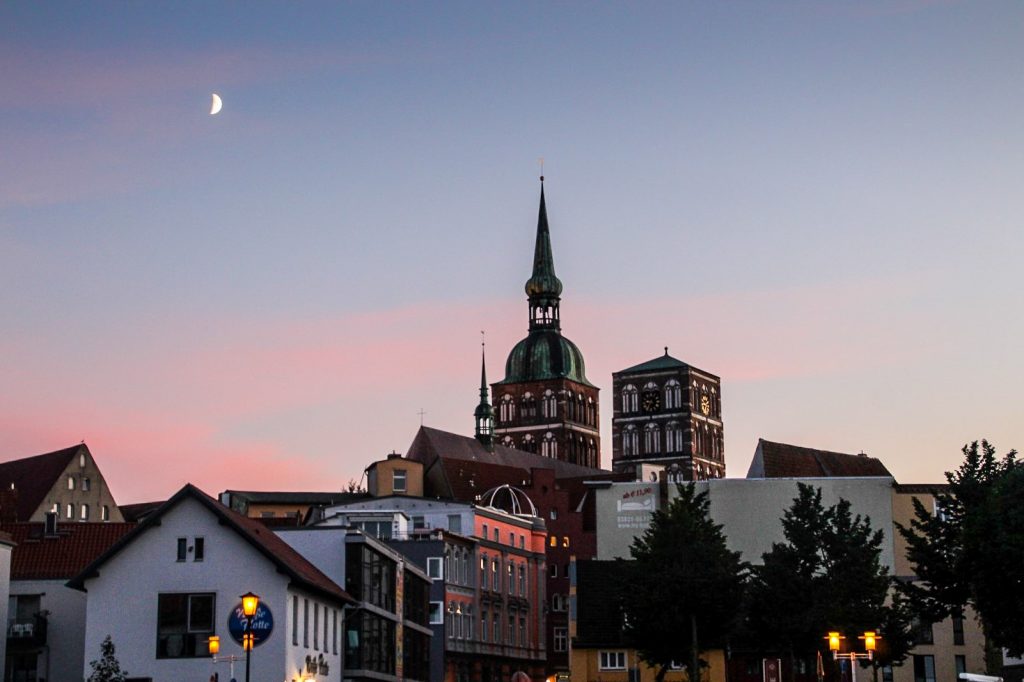
An evening stroll at sunset
On our first evening in Stralsund, we took a long stroll past the Kleiner Frankenteich lake that surrounds the city centre, through the atmospheric harbour and to the city centre. The old centre dates back to 1234 when Stralsund was granted city rights as an important member of the medieval Hanseatic League, a commercial and defensive confederation of market towns in northern Europe that dominated commercial activity in the area from the 13th to the 15th century. Along with the old town in the nearby city of Wismar, Stralsund’s old town is a UNESCO World Heritage Site.
The sun was setting, creating a cozy atmosphere and the most stunning light for photography. As we wandered through the narrow cobbled streets, I couldn’t help but stop every few seconds to take a picture. I was enchanted by what I saw, a rarety in a city for me.
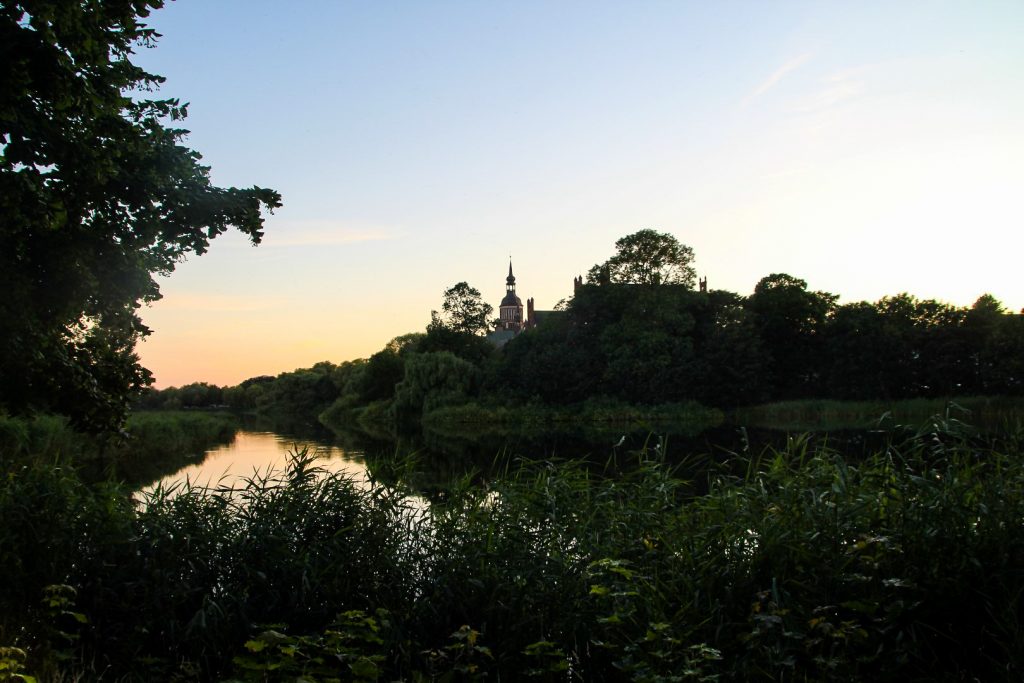



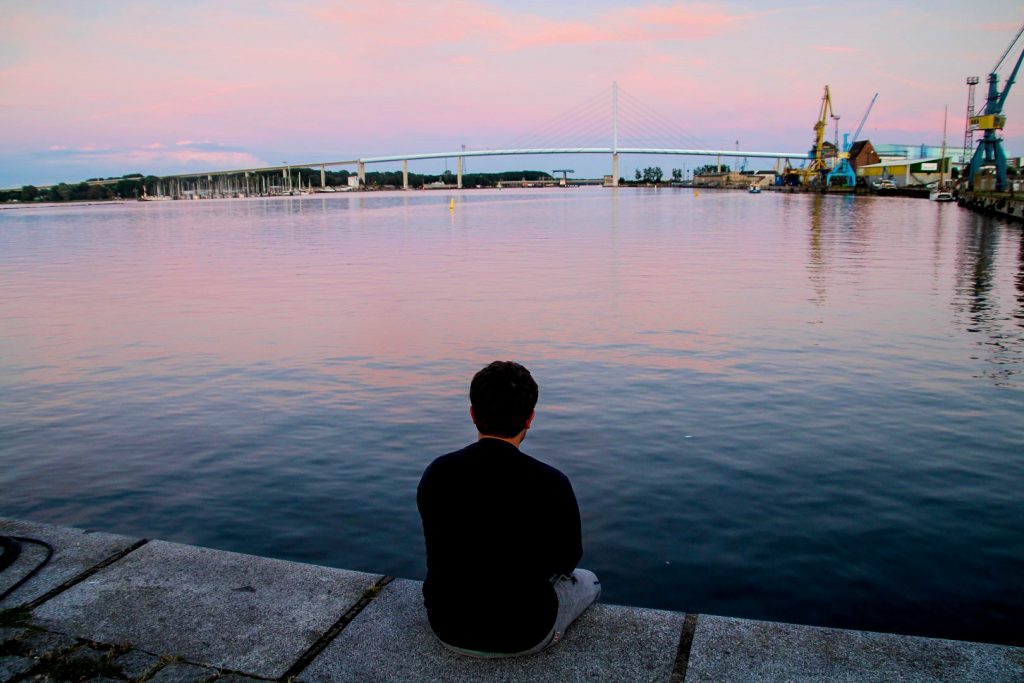
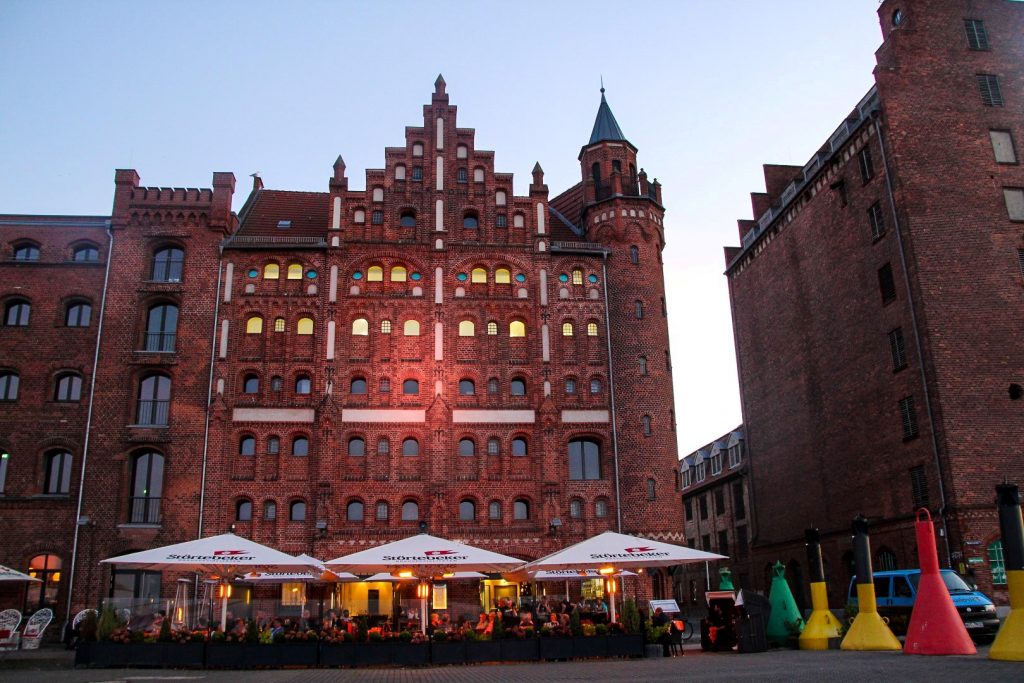

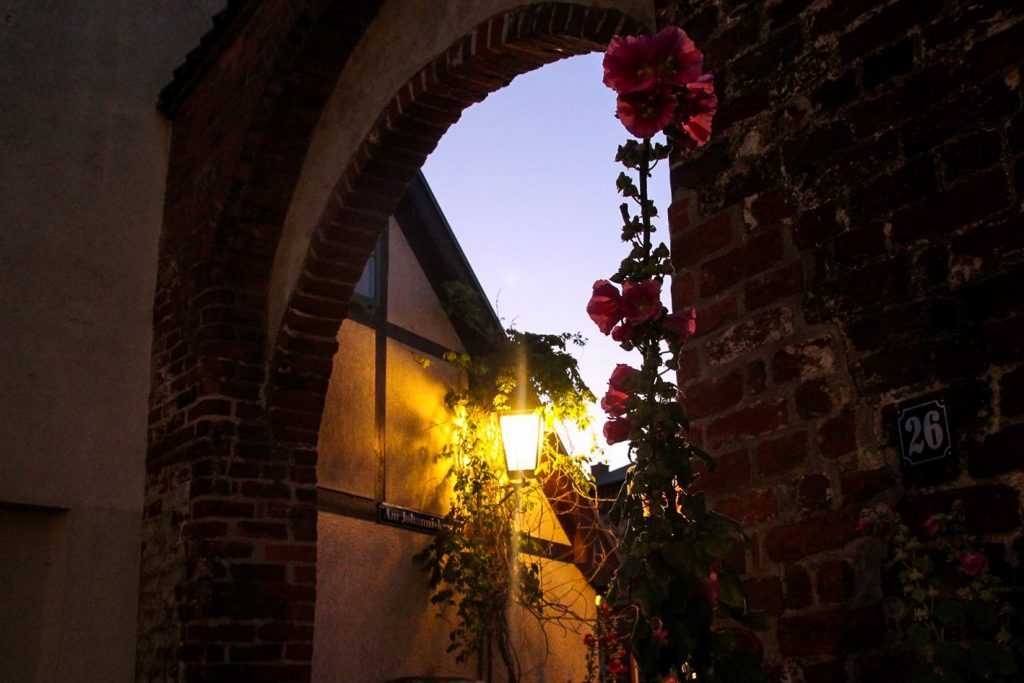
The churches of Stralsund
The next eight days were primarily spent on Rügen with a single day in the city of Greifswald, another on the island of Hiddensee and one spent entirely in Stralsund. We hadn’t planned to spend an entire day in Stralsund, but considering how much we enjoyed being there, we knew we had to spend some time exploring the city properly.
Stralsund’s churches were an obvious place to start. Nikolaikirche (‘St. Nicholas’ Church’) by the main square is the oldest of the three major parish churches in the city, dating back to 1234. Unfortunately, it is not free of charge to enter (any house of God should be free or donation based in my opinion), so we continued to the next church.
The much larger Marienkirche (‘St. Mary’s Church’) is free of charge and very worth spending some time exploring. This Lutheran Gothic church was built around 1298 and actually became the tallest building in the world between 1549 and 1647 after the collapse of the spire of Lincoln Cathedral in England.
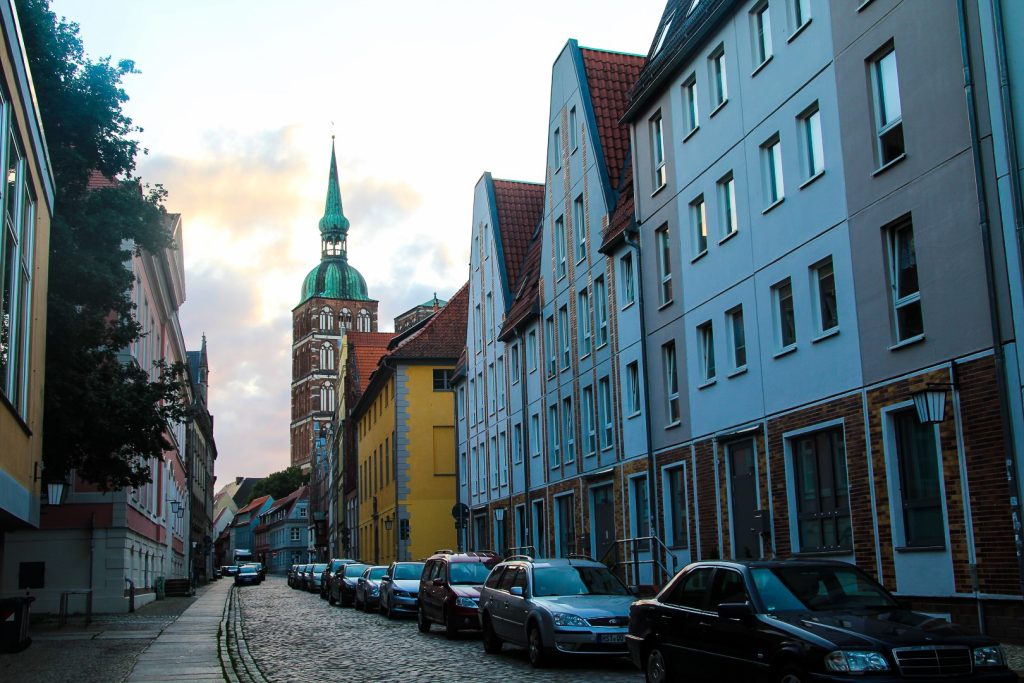
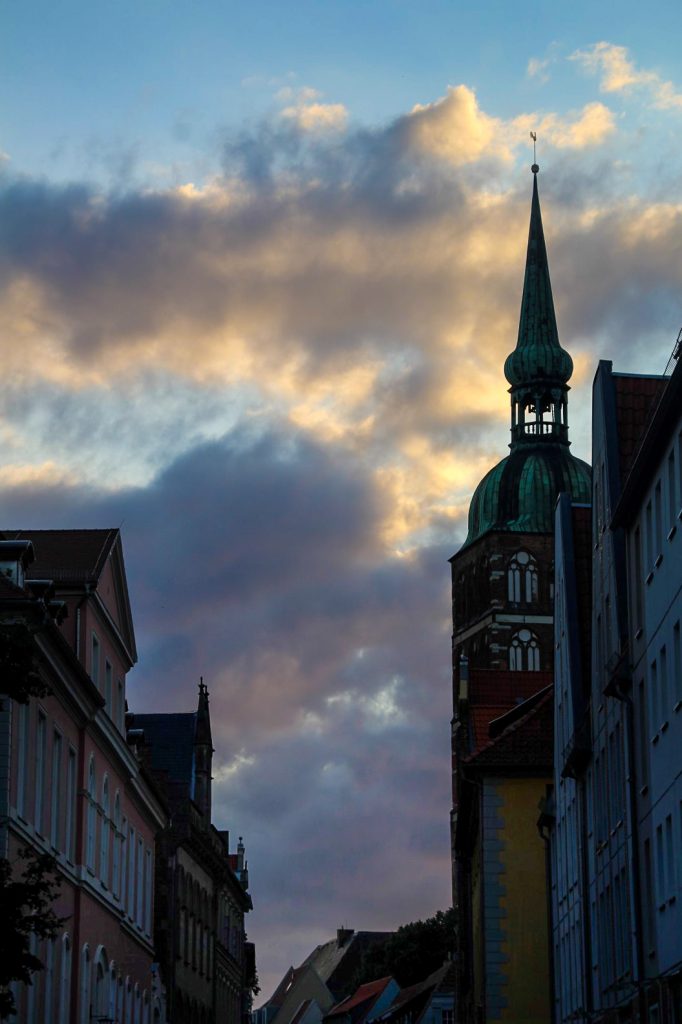
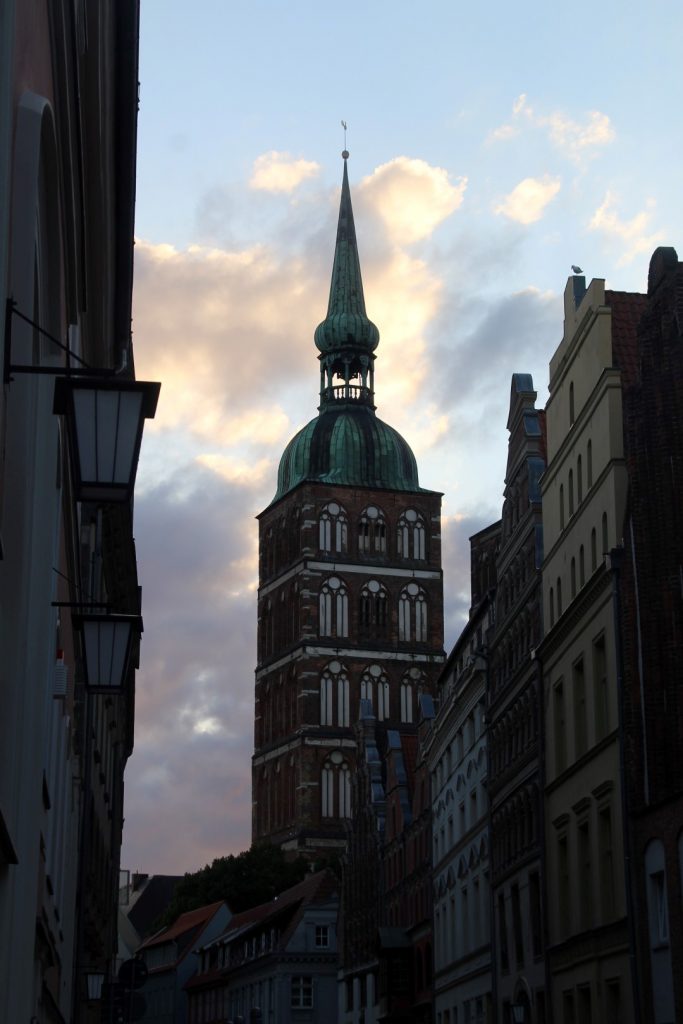

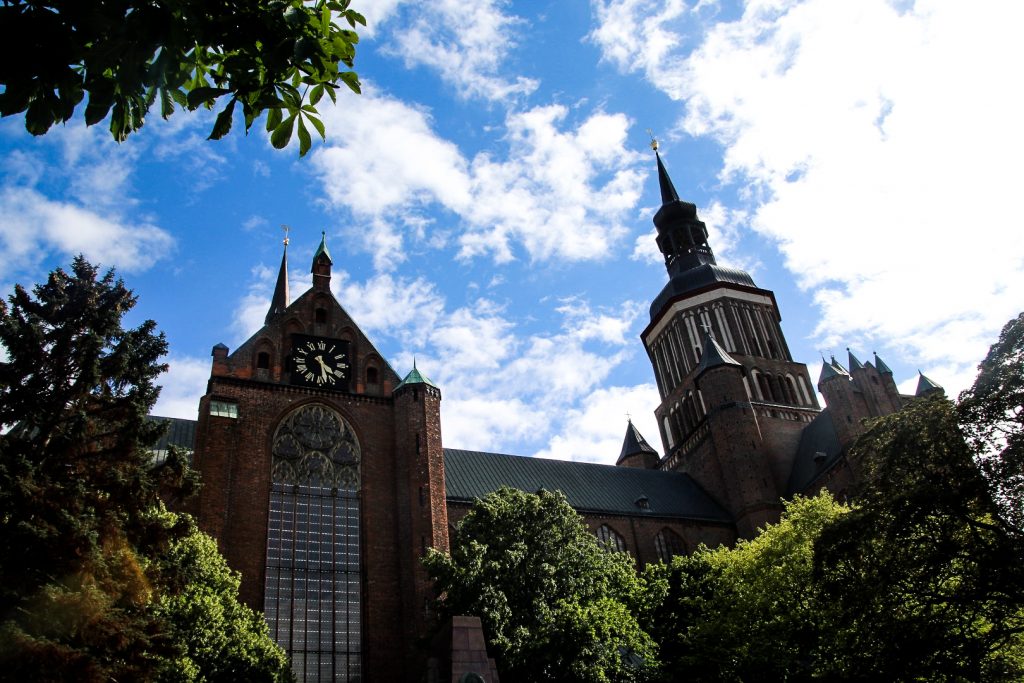



The monasteries of Stralsund
Besides the churches, Stralsund is also home to several monasteries such as the stunning leaf-covered Kloster zum Heiligen Geist or Heilgeisthospital (‘Monastery of the Holy Spirit’ or ‘Hospital of the Holy Spirit’), the oldest hospital in the city, first mentioned in 1256. The hospital took in the sick and needy and granted them accommodation and care.
Another monastery – or rather, the ruins of it – is Johanniskloster (‘Monastery of St. John’), located in the northern part of the city centre. It was built as a Franciscan monastery in 1254 with a mix of different architectural epochs, mixing Gothic, Baroque and Classical elements. Unfortunately, the monastery was severely destroyed during a WW2 bombing raid in 1944, and it is still undergoing extensive renovations in order to preserve what is left of it.
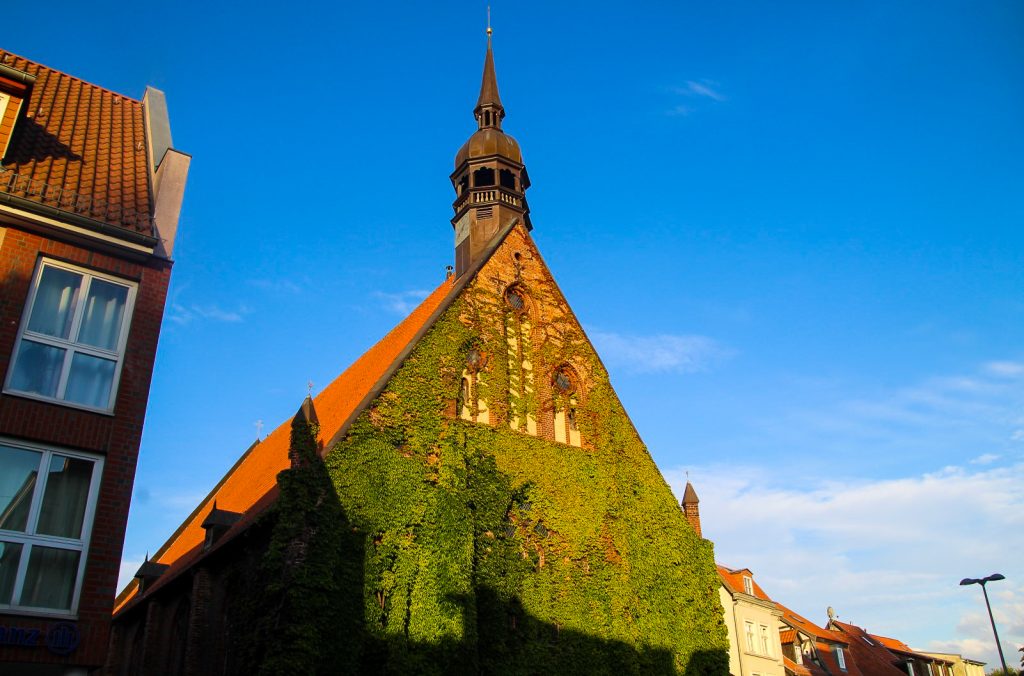
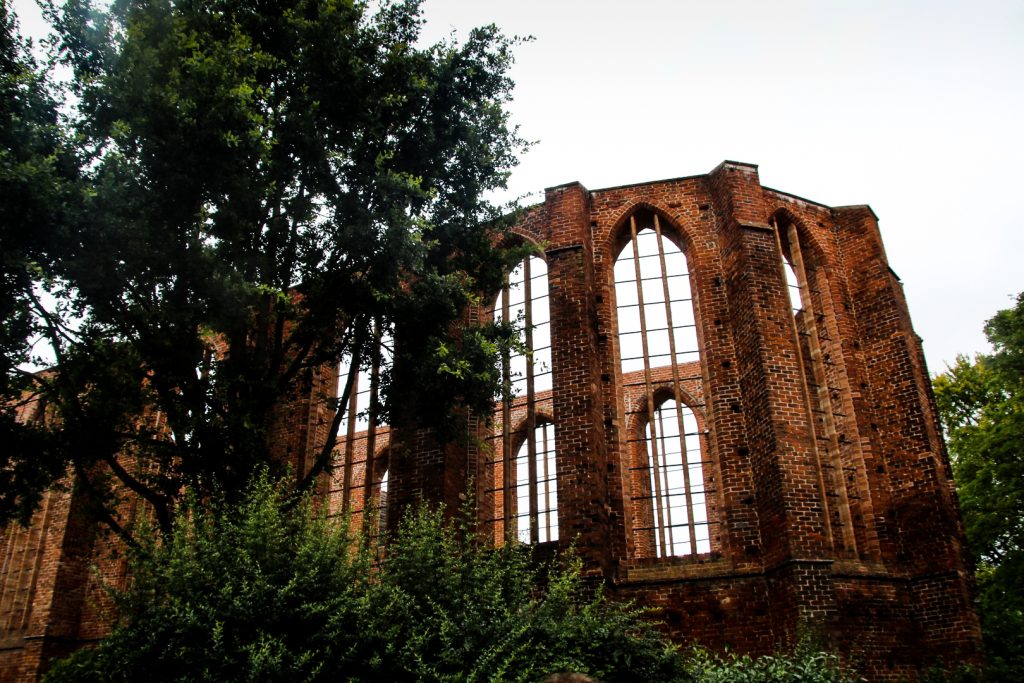
A cozy neighbourhood by the old city walls
Johanniskloster is located in the most adorable neighbourhood in the city, one we returned to many times. The houses here are built close together, colourful and full of flowers.
A walk through the neighbourhood brought us to Kniepertor and Kütertor, the only two surviving former city gates out of ten from the Hanseatic period when the city centre was surrounded by a wall.
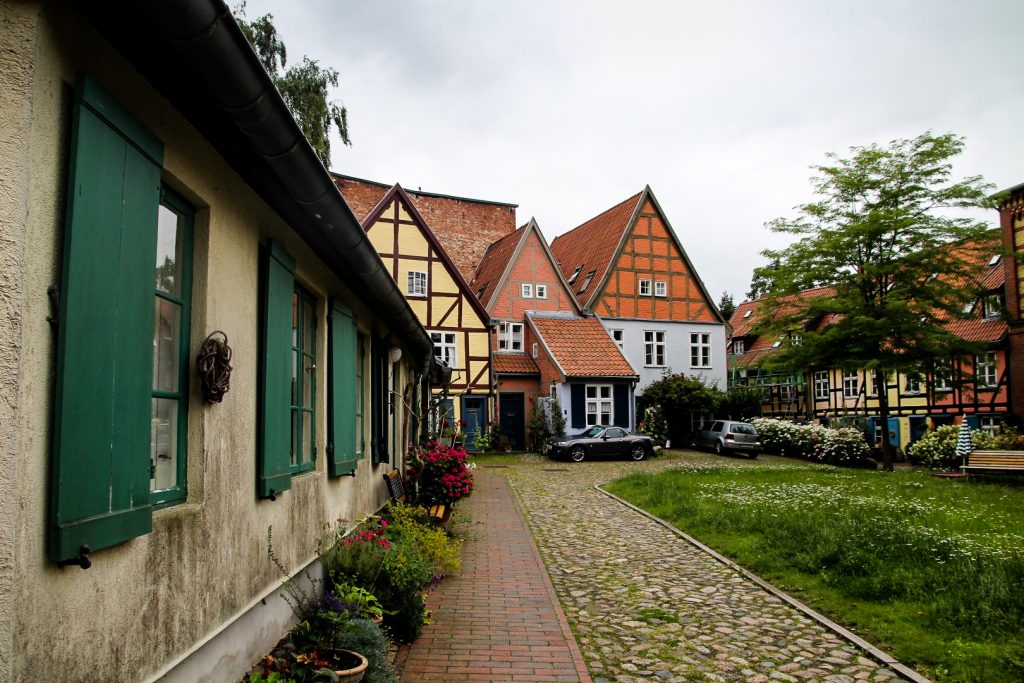
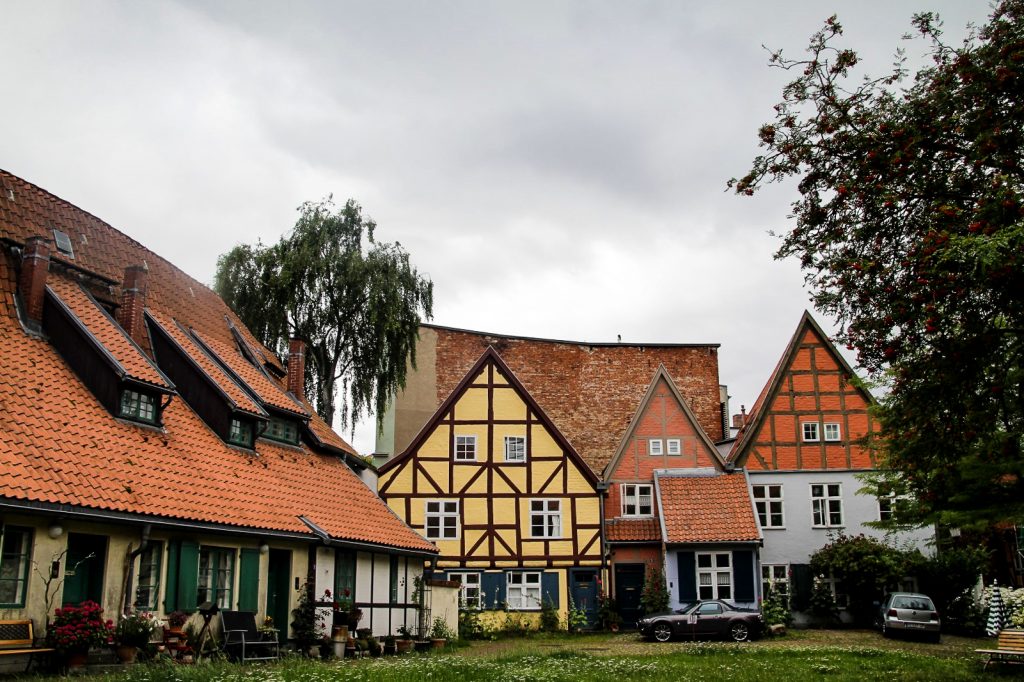

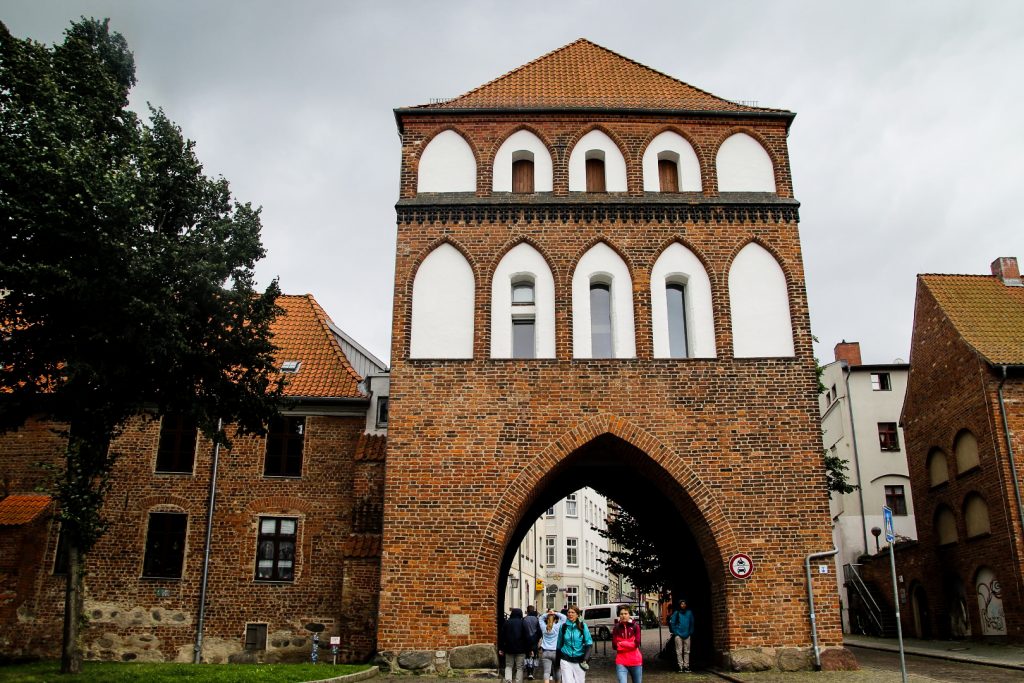
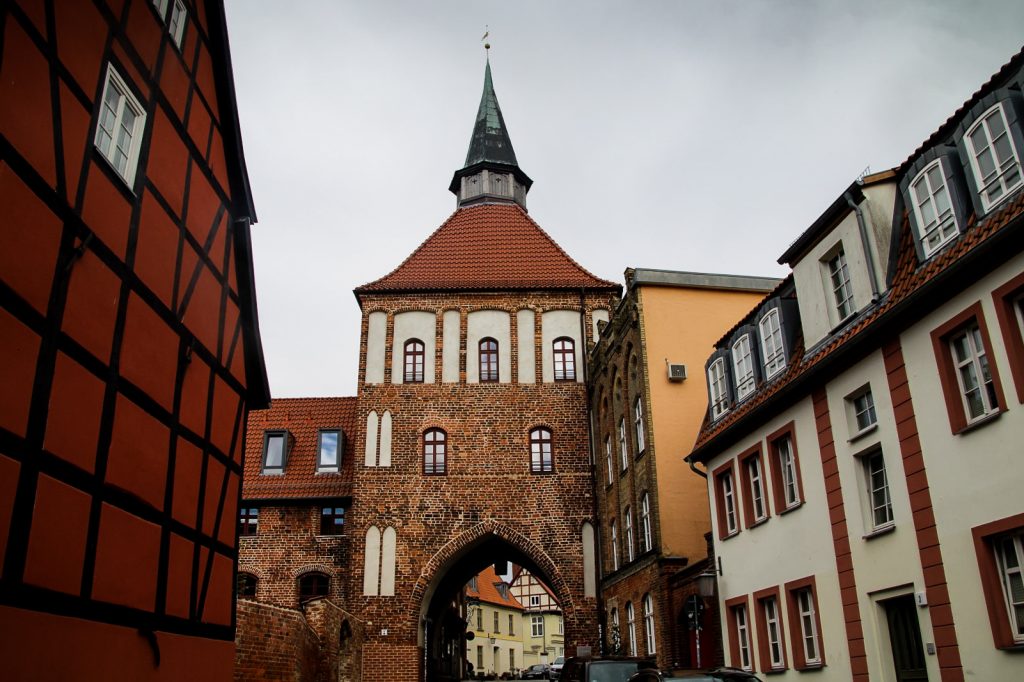
The historic island of Dänholm
Since we’d decided to discover what Stralsund has to offer, there was one place we couldn’t miss, although not actually in Stralsund itself; the island of Dänholm, located in the Strelasund (‘Strela Sound’) between Stralsund and Rügen. The tiny island is connected by a bridge to both sides so it’s easily accessible and a perfect stop for an afternoon wander.
Dänholm is especially interesting to visit as Danes since, well, you might have guessed it, its name translates to Danes’ Isle since its natural harbour was used by the Danes as a starting point for several conquests during the Medieval period.
The island has since belonged to Sweden, which also occupied Stralsund between 1628 and 1815, has been besieged by the French and been under Prussian rule. In 1850, a war harbour was built on the island, complete with gunboats and several military installations. It is considered the birthplace of the Prussian navy.
Today, the island is a lot more peaceful and houses a marina, a fishing museum and a marine museum. Walking around the island, I felt like we were back in time. The old buildings tell a story of a bygone heyday that seems very far from the solitude found there today.
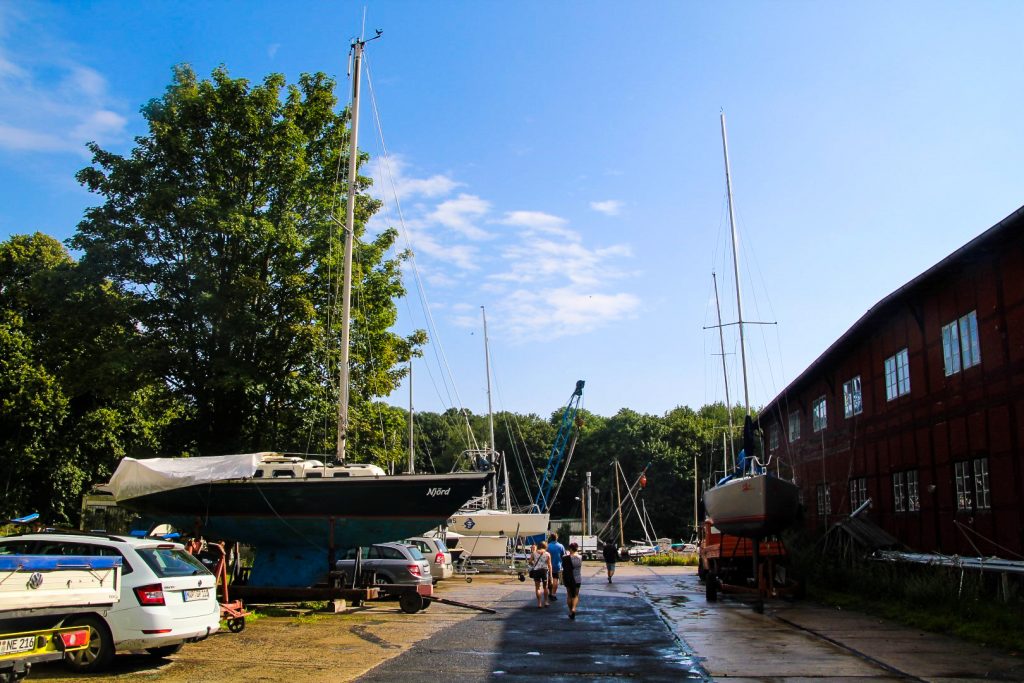
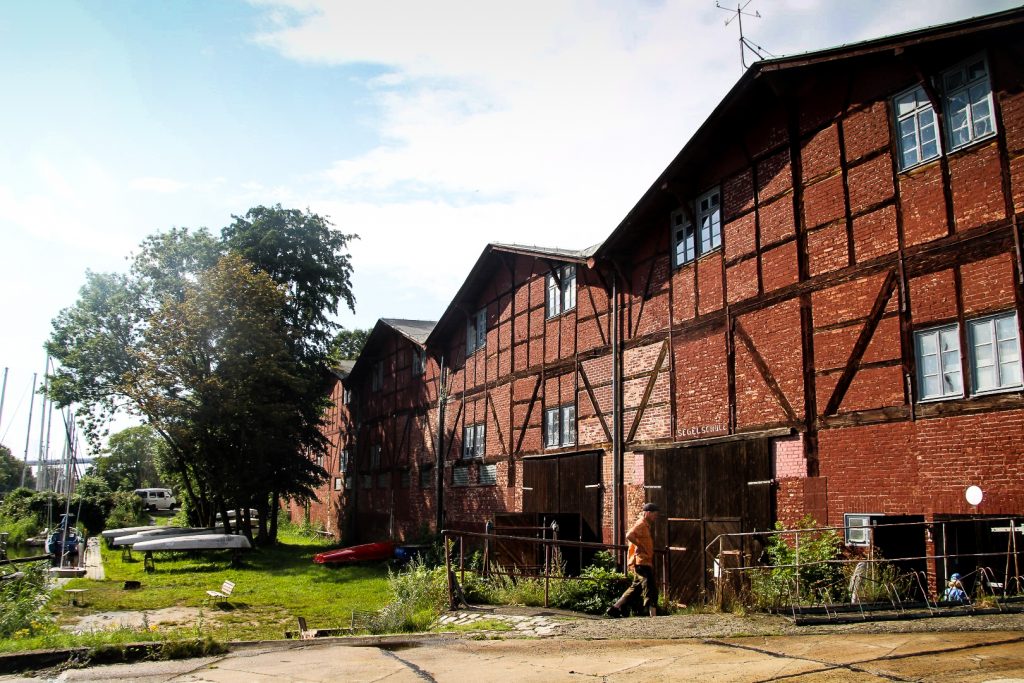
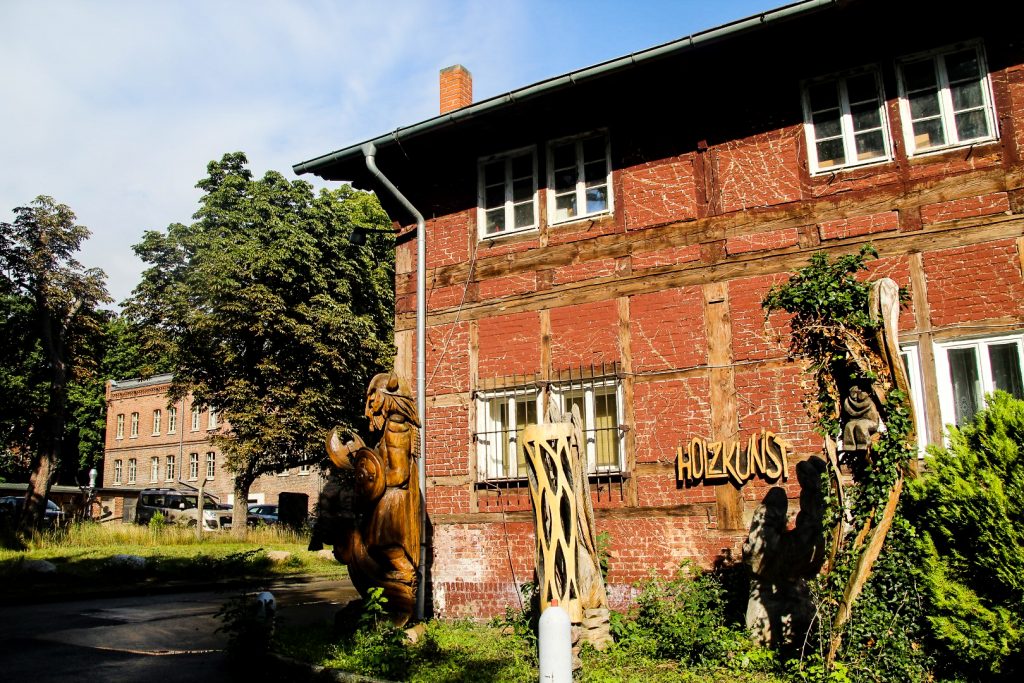
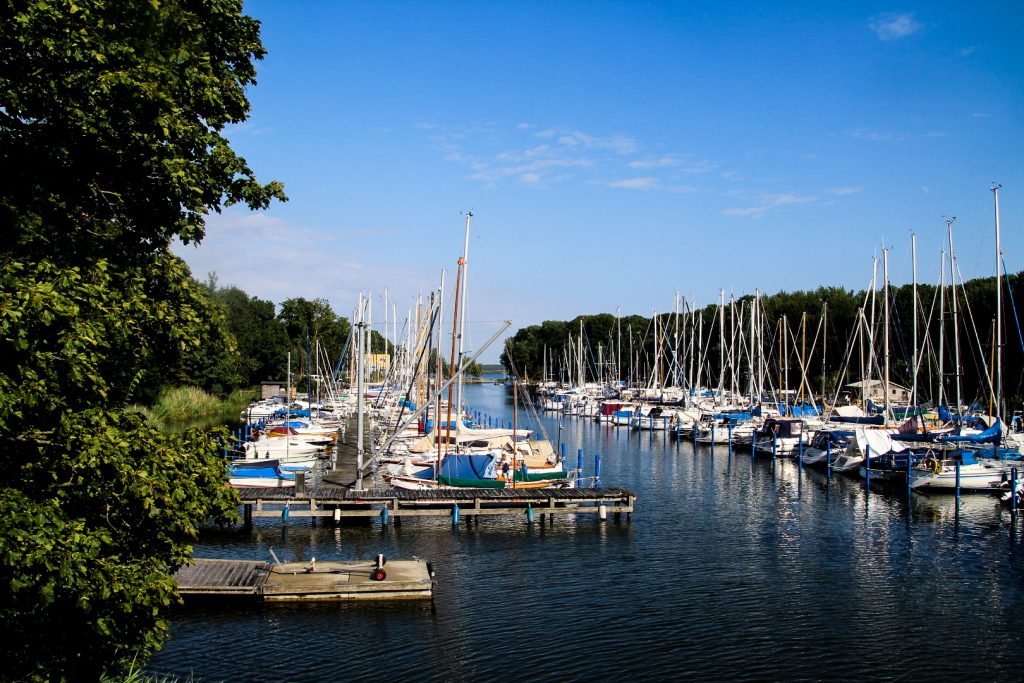
Atmospheric evenings at Alter Markt
While we didn’t spend the daytime hours in Stralsund the remaining days, we did spend most of our evenings at one of the city’s many cozy restaurants. We ate by the harbour a few times, but my favourite setting was the main square, Alter Markt, the heart of the historic city centre with remarkable buildings such as the Gothic town hall from the early 14th century and Wulflamstuben, the oldest building in the city.
During the mild evenings, a young man played his piano in the middle of the square, and children danced and played in the fountain. The atmosphere at the square was a rare one, a bright and cozy one that I miss dearly.
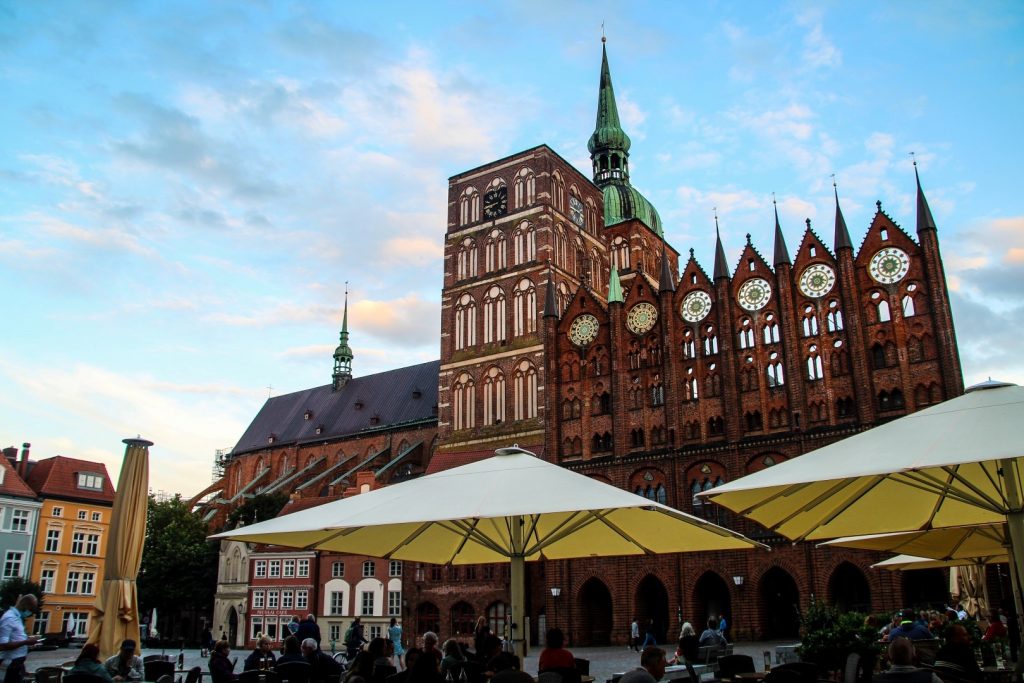
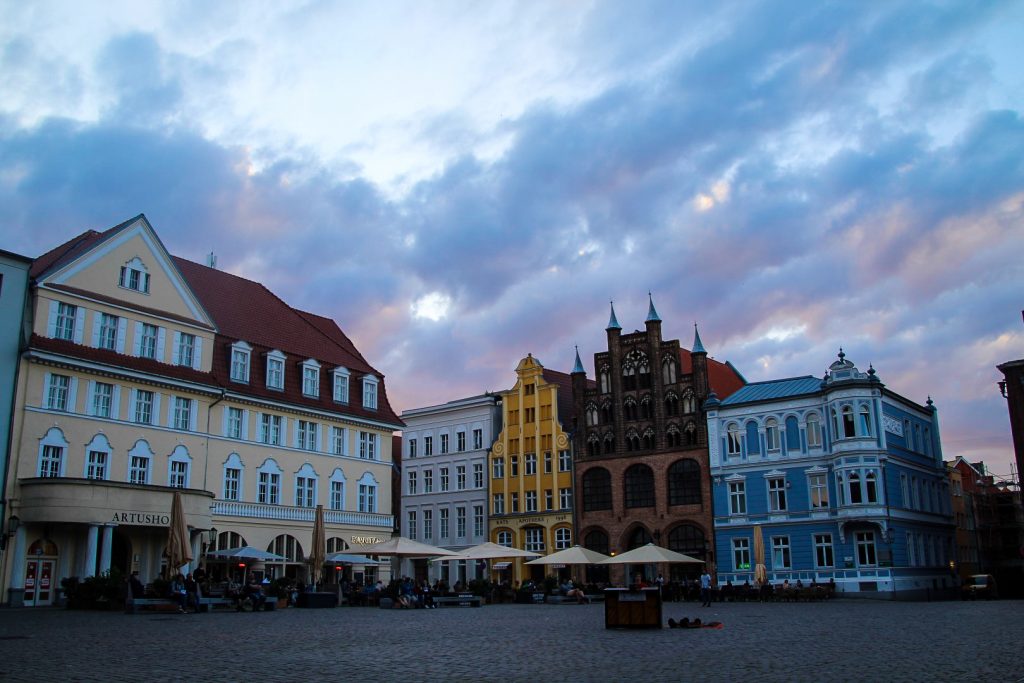
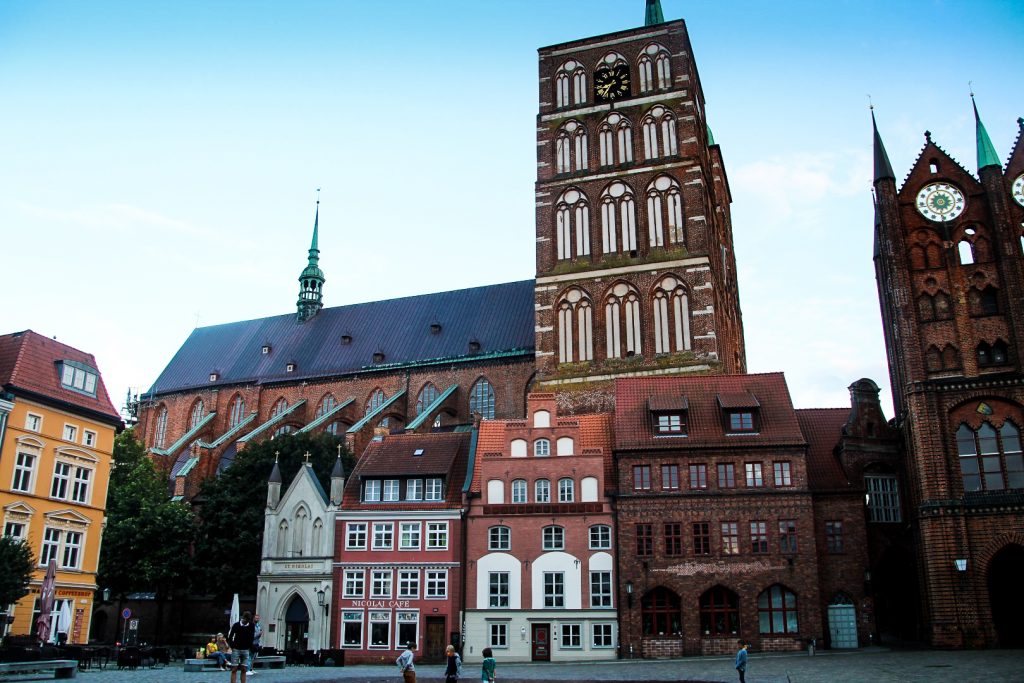
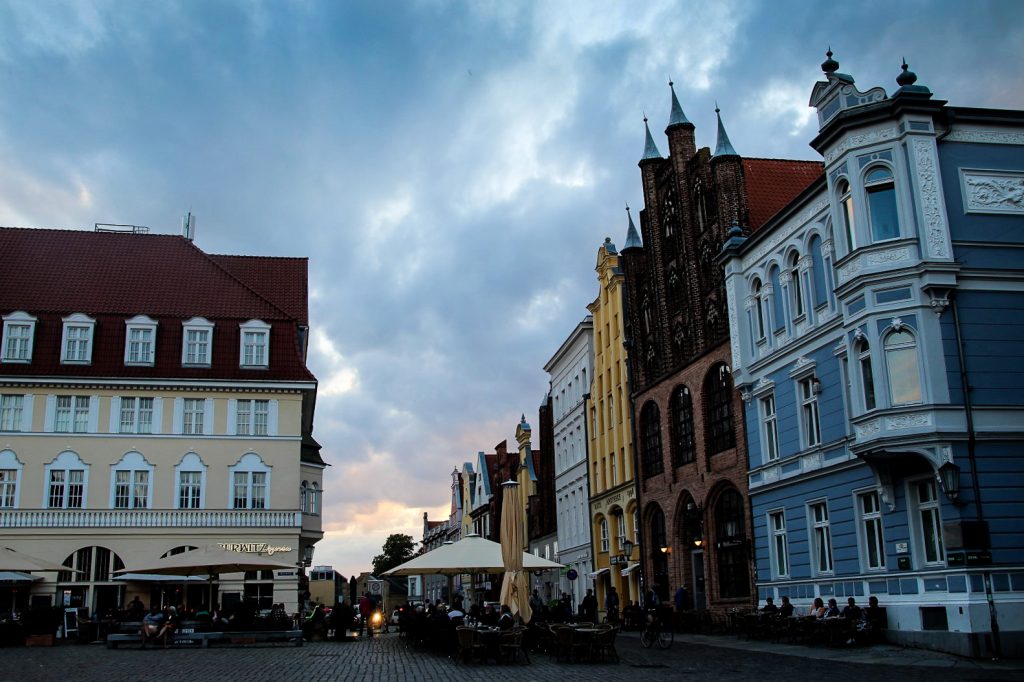

It’s not often that I feel this way about a city. Usually, I can only spend a day or two in a city before getting bored, but Stralsund was not like that. I could’ve stayed much longer, and it’s one of very few cities that I could actually imagine living in.
I loved the old architecture, the cozy main square, the lively and charming harbour and all the nature surrounding the city centre. I also love how close Stralsund is to several Baltic islands, rural areas and small villages. Both the islands of Rügen and Dänholm are literally only a bridge away!
WANT MORE INFO?: Download a city guide for Stralsund with GPSmyCity here!
Leave a Comment
Pingback: Summer days in Lübeck, the city of seven spires – Northtrotter on 28/10/2020
Pingback: Hanseatic Greifswald: An afternoon in an old university city – Northtrotter on 28/10/2020

2 COMMENTS